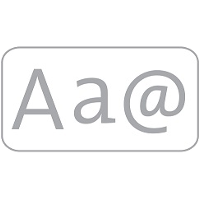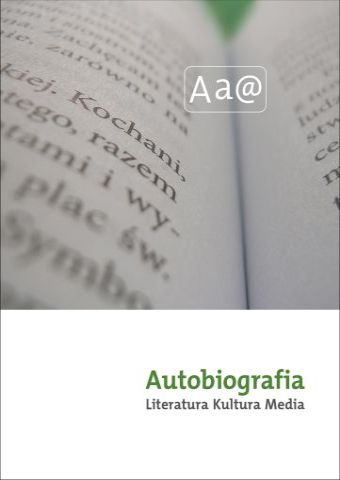






| Authors: |
Szymon Piotr
Kubiak
Akademia Sztuki w Szczecinie |
| Keywords: | Modernism Wilhelminism Around 1800 Style urban planning transport reconstruction of cities monuments medieval heritage Urban Landscape nationalism Polish Western Thought |
| Data publikacji całości: | 2014 |
| Page range: | 13 (177-189) |
| 1. | [bez tytułu], „Głos Rzemieślnika” 1936, nr 8. |
| 2. | Bernhardt Katja, „Zielone miasto portowe nad rzeką i morzem” – urbanistyczna wizja Szczecina |
| 3. | Hansa Bernharda Reichowi. W: Sztuka XX wieku w Szczecinie i na Pomorzu Zachodnim. Przemiany |
| 4. | i kontynuacje. Materiały z Seminarium Naukowego Szczecińskiego Oddziału Stowarzyszenia |
| 5. | Historyków Sztuki, Szczecin, 18–19 listopada 2005, red. Maria Glińska, Rafał Makała, Muzeum |
| 6. | Narodowe w Szczecinie, Szczecin 2008. |
| 7. | Bernhardt Katja, Musekamp Jan, 1945 – ein Bruch? Stadtplaner in Stettin und Szczecin, „Nordost- |
| 8. | Archiv”, Neue Folge, Bd. XV/2006, 2007. |
| 9. | Domańska Justyna, Odbudowa Szczecina po 1945 roku. Przemiany w mieście i realizacja nowej |
| 10. | przestrzeni artystycznej, praca magisterska w zbiorach Instytutu Historii Sztuki Uniwersytetu |
| 11. | im. Adama Mickiewicza w Poznaniu, Poznań 2006. |
| 12. | Foreign News: Poland – Plan Fulfillment, „Time” 1947, vol. L, nr 22. |
| 13. | Fülberth Andreas, Tallinn – Riga – Kaunas. Ihr Ausbau zu modernen Hauptstädten 1920–1940, Böhlau, |
| 14. | Köln, Weimar, Wien. |
| 15. | Grzeszczuk-Brendel Hanna, Architektura i budownictwo Poznania w pierwszej połowie XX wieku. |
| 16. | W: Architektura i urbanistyka Poznania w XX wieku, red. Teresa Jakimowicz, Wydawnictwo |
| 17. | Miejskie, Poznań 2005. |
| 18. | Jak zachować wał obronny Chrobrego, „Ilustracja Polska” 1938, nr 33. |
| 19. | Kisielewski Józef, Ziemia gromadzi prochy, Księgarnia św. Wojciecha, Poznań 1939. |
| 20. | Klause Gabriela, Wybrane problemy ochrony zabytków początku XX wieku i odbudowa Poznania po |
| 21. | II wojnie światowej. W: Architektura i urbanistyka Poznania w XX wieku, red. Teresa Jakimowicz, |
| 22. | Wydawnictwo Miejskie, Poznań 2005. |
| 23. | Klause Gabriela, Versuch einer neuen Sicht auf das Problem des Wiederaufbaus des Altstädtischen |
| 24. | Marktes in Posen. W: Der Umgang mit dem kulturellen Erbe in Deutschland und Polen im 20. Jahrhundert. |
| 25. | Beiträge der 9. Tagung des Arbeitskreises deutscher und polnischer Kunsthistoriker und |
| 26. | Denkmalpfleger in Leipzig, 26.–29. September 2002, red. Andrea Langer, Instytut Sztuki Polskiej |
| 27. | Akademii Nauk, Warszawa 2004. |
| 28. | Kodym-Kozaczko Grażyna, Rozwój Poznania w planowaniu urbanistycznym w latach 1900–1990. |
| 29. | Kozina Irma, Styl około 1800, styl narodowy czy nowa rzeczywistość w architekturze Górnego Śląska? |
| 30. | W: Nacjonalizm w sztuce i Historii Sztuki 1789–1950, red. Dariusz Konstantynow, Roman |
| 31. | Pasieczny, Piotr Paszkiewicz, Instytut Sztuki Polskiej Akademii Nauk, Warszawa 1998. |
| 32. | Kozińska Bogdana, Neue Stadtstrukturen und Symbole des Neuanfangs in Stettin. Die sozialistische |
| 33. | Stadt im Gefüge historisch gewachsener Städte. W: Die Schleifung. Zerstörung und Wiederaufbau |
| 34. | historischer Bauten in Deutschland und Polen, red. Dieter Bingen, Hans-Martin Hinz, Harrassovitz |
| 35. | Verlag, Wiesbaden 2005. |
| 36. | Kubiak Szymon Piotr, Modernizm zapoznany. Architektura Poznania 1919–1939, Centrum Architektury, |
| 37. | Warszawa 2014. |
| 38. | Mebes Paul, Um 1800. Architektur und Handwerk im letzten Jahrhundert ihrer traditionellen Entwicklung, |
| 39. | Bruckmann, München 1908. |
| 40. | Musekamp Jan, Między Stettinem a Szczecinem. Metamorfozy miasta w latach 1945–2005, Nauka |
| 41. | i Innowacje, Poznań 2013. |
| 42. | Pałat Zenon, Architektura a polityka. Gloryfikacja Prus i niemieckiej misji cywilizacyjnej w Poznaniu |
| 43. | na początku XX wieku, Poznańskie Towarzystwo Przyjaciół Nauk, Poznań 2011. |
| 44. | Piotrowski Piotr, „Drang nach Westen”. The Visual Rhetoric of Polish „Western Politics” in the 1930s. |
| 45. | W: Visuelle Erinnerungskulturen und Geschichtskonstruktionen in Deutschland und Polen 1800 |
| 46. | bis 1939. Beiträge der 11. Tagung des Arbeitskreises deutscher und polnischer Kunsthistoriker und |
| 47. | Denkmalpfleger in Berlin, 30. September–3. Oktober 2004, red. Robert Born, Adam S. Labuda, |
| 48. | Instytut Sztuki Polskiej Akademii Nauk, Warszawa 2006. |
| 49. | Przypkowski Tadeusz, Zachwatowicz Jan, Mury obronne Warszawy, Drukarnia Miejska, Warszawa |
| 50. | 1938. |
| 51. | Skuratowicz Jan, Architektura Poznania 1890–1918, Wydawnictwo Naukowe Uniwersytetu im. |
| 52. | Adama Mickiewicza, Poznań 1991. |
| 53. | Zaremba Piotr, Wspomnienia prezydenta Szczecina, Wydawnictwo Poznańskie, Poznań 1977. |
| 54. | Zaremba Piotr, Z pobytu w Tallinnie, „Życie Techniczne” 1935, nr 8. |
| 55. | Zaremba Piotr, Helsinki, „Życie Techniczne” 1935, nr 7. |
| 56. | Zaremba Piotr, Trzy arcydzieła techniki szwedzkiej, „Życie Techniczne” 1935, nr 3. |
| 57. | Zaremba Piotr, W czterech stolicach nadbałtyckich, „Życie Techniczne” 1934/1935, nr 1–2. |
| 58. | […] alternatively in an other harbour […]. Piotr |